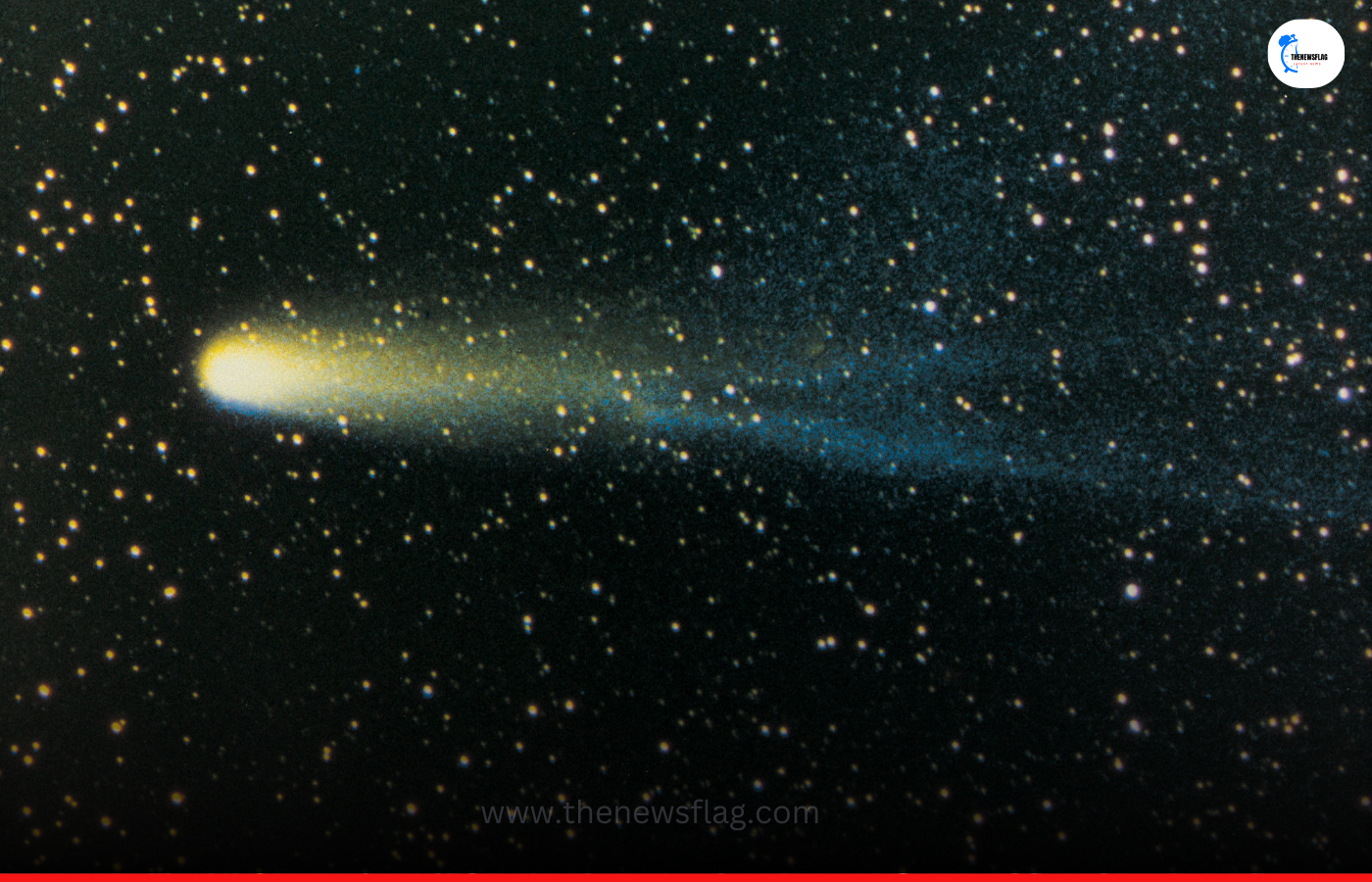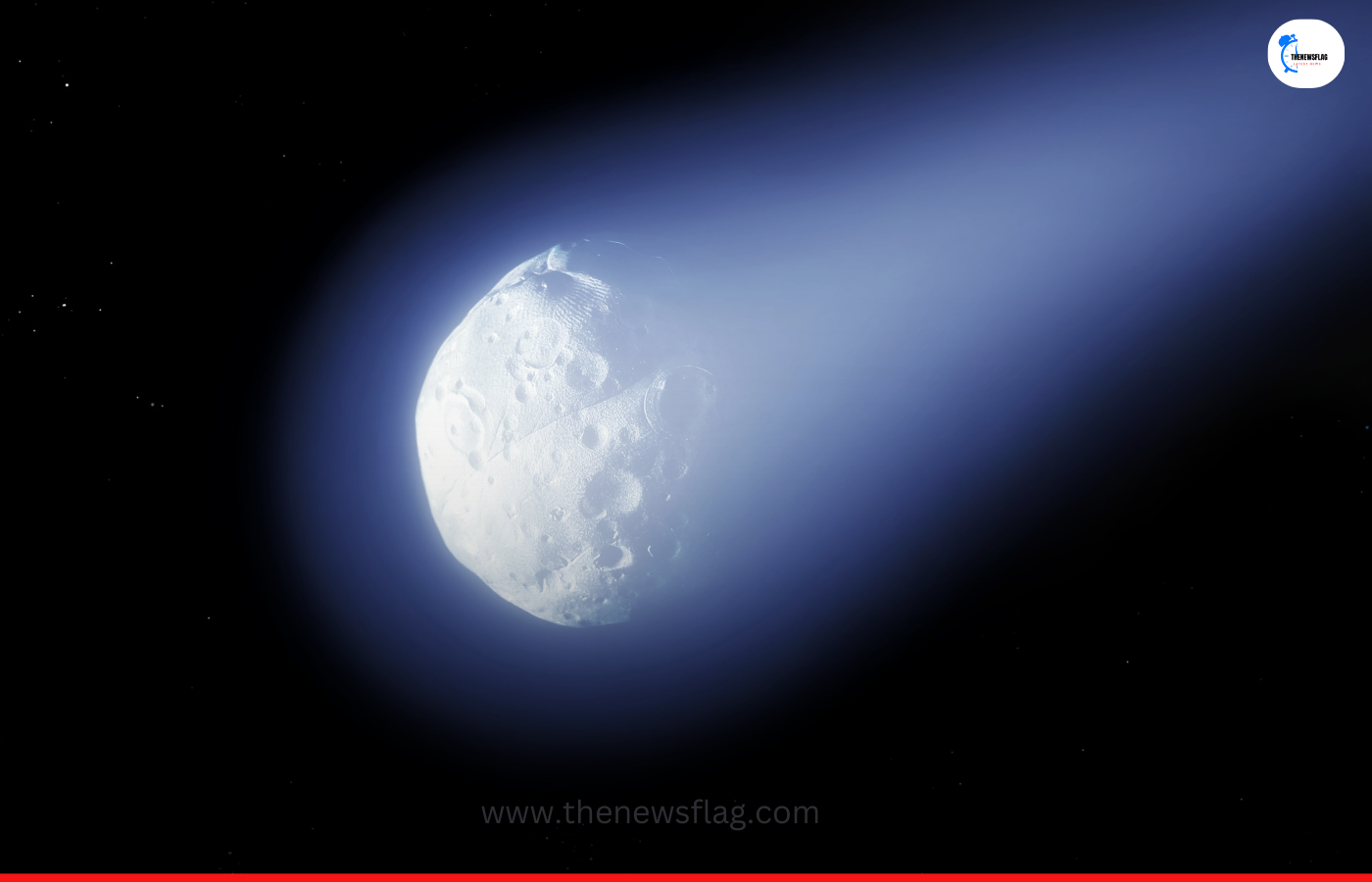Secret behind Halley’s Comet: There’s no mystery. Halley’s comet has a period of ~75.3 years (not 72). It is in a very elliptical orbit. It comes as close to the Sun as halfway between Earth and the Sun and as far from the Sun as halfway between Neptune and Pluto. Every ~75 years, it is close to the Sun and develops a tail as the Sun melts its surface, making it easily visible to us. The rest of the time, it is far away, cold and dark.
View this post on Instagram
Halley’s Comet spawns the Eta Aquariid meteor shower and the Orionids in October. Halley’s comet will return to the inner solar system in 2061.
What would happen if Halley’s Comet hit the Moon?
Halley’s Comet has a mass of 2.2e14 kg (Wikipedia). If it started at rest and merely fell into the moon’s gravity well, it would hit the moon with the moon’s escape velocity of 2.38 km/s, releasing 0.5 * 2.2e14 kg * (2380 m/s)^2 = 6.23e20 J of energy. That’s about 150,000 megatons of TNT (the largest nuclear weapon ever detonated by humans, Tsar Bomba, was only about 50 MT).
But the actual energy would be considerably greater. Halley’s Comet inclines 162 degrees, meaning it orbits the sun in almost exactly the opposite direction as the planets. The earth-moon system has (by definition) an inclination of 0 degrees and an average velocity of about 30 km/s. Halley’s speed varies since it’s in an elliptical orbit, but we can estimate it.

Will it be possible to visit Halley’s Comet in 2061?
How fast is Halley’s Comet? Well for a quick approximation let’s look at the small blue circle close to the Sun, that is the orbit of the third planet, Earth. The blue line represents a distance with the same length as the circumference of the Earth’s orbit, about 940 million km. We can see that Halley’s comet moves about 1.5x that distance in the year before and after its perihelion, so than it moves with an average speed of 161 thousand km/h. When furthest away it takes almost 15 years for the same distance, so there the average speed is 11 thousand km/h.
What is the secret behind Halley’s Comet? & Where does It’s comet go?
The comet 1P/Halley, like all other comets, orbits the Sun. Unlike the planets, Halley’s comet is in a highly eccentric orbit (meaning it’s not at all circular), while the planets move in nearly circular orbits. At the moment, Halley’s comet is outside the orbit of Neptune.
Can Halley’s comet strike a planet in the solar system?
To answer your question, no, Halley’s comet won’t strike any planet since it’s in motion along its well-defined orbit.
Comets are celestial bodies that follow a particular orbit around the Sun, like planets, but their orbits are way different than the orbits that planets have.
Comets usually have highly eccentric elliptical orbits, and they have a wide range of orbital periods, ranging from several years to potentially several millions of years. Comet neowise, for example, has an orbital period of about 7000 years!!






